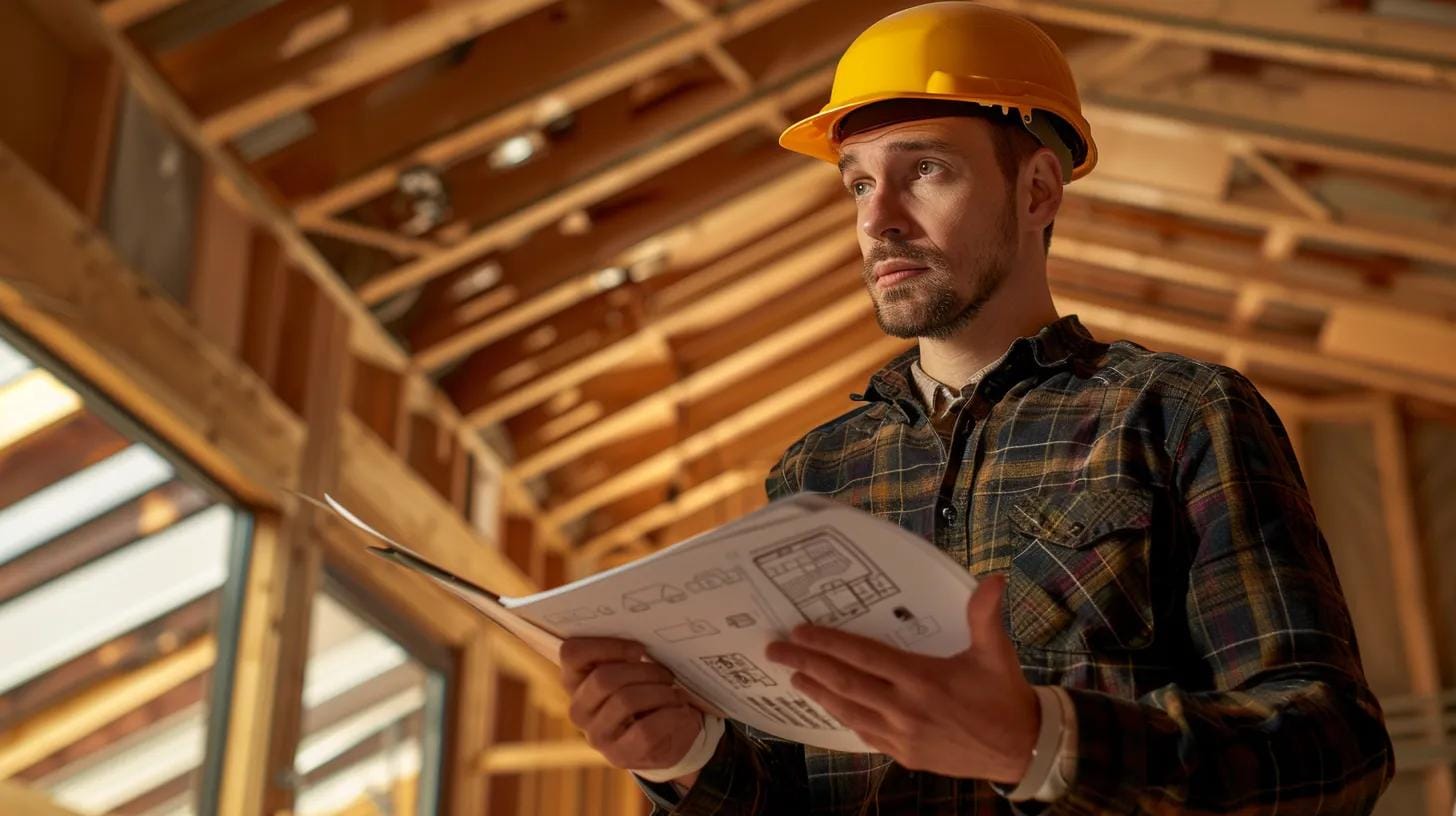WDO Inspection Services Near Me: What to Expect
Introduction
Wood destroying organism (WDO) inspections are essential components of a thorough property examination, especially before a real estate transaction or when signs of infestation appear. These specialized inspections ensure that insects, fungi, and decay-causing agents—such as termites, powderpost beetles, and dry rot—are detected early, thereby protecting your property’s structural integrity. Homeowners, real estate agents, and property investors rely on certified WDO inspectors to provide an unbiased assessment and a detailed WDO report that includes recommendations for treatment and prevention. This service is critical because wood destroying organisms can remain hidden in attics, walls, roofs, and crawl spaces, causing extensive, costly damage over time.
A professional WDO inspection begins with a visual and structural assessment of the entire property and extends to hidden areas where moisture and wood decay are common. The expert uses specialized tools, sometimes including moisture meters and fiber optics, to detect early signs of infestation and structural compromise. By catching and treating these infestations early, homeowners often avoid the high expenses associated with extensive repairs or full-scale fumigation efforts later. Moreover, comprehensive WDO inspections provide peace of mind for homeowners and are invaluable during the sale of properties, ensuring that potential issues are addressed before any transfer of ownership.
In today’s competitive real estate market, having a certified WDO inspection can substantially increase the value or saleability of your property. Numerous local companies offer these valuable services, making it easier than ever to find highly rated inspectors near you. As awareness of environmental conditions and structural sustainability increases, so does the demand for reliable WDO inspections. The following sections explore every aspect of the inspection process—from understanding what constitutes a WDO to preparing your home for an inspection and evaluating the inspection report. This article provides a comprehensive guide on WDO inspection services, ensuring that property owners and buyers know exactly what to expect and how to maintain a safe living environment.
Transitioning into the detailed sections, the article will cover the importance of WDO inspections, reliable service providers near you, a step-by-step breakdown of the inspection process, what to expect in the inspection report, preparation techniques for homeowners, post-inspection treatment options, and insights into customer satisfaction with local services.
Key Takeaways
- WDO inspections safeguard property integrity by identifying hidden wood-destroying organisms before they cause significant structural damage.
- Certified WDO inspectors use advanced tools to perform comprehensive visual and structural assessments of the entire property.
- The inspection report provides detailed findings with recommendations for treatment, helping property owners mitigate future risks.
- Proper preparation and prompt action following a WDO inspection can prolong the lifespan and value of your property.
- Reliable local WDO inspection services are crucial for ensuring thorough evaluations during real estate transactions.
What Are WDO Inspection Services and Why Are They Important?
WDO inspection services are professional evaluations designed to detect wood destroying organisms that can compromise a property‘s structure. These organisms include termites, carpenter ants, dry rot fungi, powderpost beetles, and other insects known to damage wood. The importance of these inspections lies in early detection; when infestations are caught early, homeowners can address the problem before extensive and expensive damage occurs. WDO inspections not only help in maintaining property value but also play a significant role in signaling potential issues before a sale, making them crucial during real estate transactions.
What Types of Wood Destroying Organisms Are Inspected?
WDO inspections involve a thorough check for various species of wood destroying organisms (WDOs). These inspections typically target: 1. Termites, particularly the formosan subterranean termite known for its aggressive behavior and rapid spread. 2. Dry rot fungi that compromise wood integrity by breaking down cellulose. 3. Powderpost beetles, whose larval stages bore into wood causing internal decay. 4. Carpenter ants, which excavate wood for nesting. 5. Wood-boring beetles that weaken wood from inside. 6. Moisture-induced decay organisms that lead to dry rot or brown rot. 7. Other lesser-known species that may cause wood deterioration over time.
Each type of organism has its unique behavior and damage patterns, and experienced inspectors are trained to recognize subtle signs of infestation. Their approach combines visual inspections with moisture analysis, which is crucial because many wood destroying organisms thrive in damp environments, often around roofs, basements, and crawl spaces. The data gathered from these inspections is documented in a detailed report, providing evidence and recommendations for proper remediation or treatment.
How Do WDO Inspections Protect Your Property?
WDO inspections protect your property by identifying the presence of wood destroying organisms before they cause significant damage. When inspectors detect signs of infestation, such as mud tubes, damaged wood, or moisture anomalies, they can recommend prompt treatment measures. Treatments often include targeted fumigation, localized chemical treatments, or even structural repairs to replace compromised wood. This early intervention helps to mitigate further spread and reduces the overall repair costs. Additionally, by having an updated and thorough inspection report, homeowners can negotiate better terms during property sales or insurance claims. Continuous monitoring and periodic inspections ensure that any re-infestation is caught early, thereby safeguarding both the investment and the safety of the occupants.
Who Should Get a WDO Inspection?
Anyone involved in purchasing, selling, or maintaining a property should consider getting a WDO inspection. Homeowners planning to sell their property will benefit from preemptive inspections, as potential buyers expect a detailed report to verify the property’s structural integrity. Real estate agents also recommend such inspections to prevent last-minute deal breakdowns. Property investors, especially those looking into older homes or structures in regions with high humidity and frequent rainfall, often rely on WDO inspections to assess risk. Additionally, property managers and condominium associations use these inspections as part of routine maintenance checks to maintain building health over time. Ultimately, ensuring that your property is free from damaging wood destroying organisms is a crucial step in long-term property preservation.
How to Find Reliable WDO Inspection Services Near Me?

Finding reliable WDO inspection services near you is essential for ensuring a thorough and accurate evaluation of your property. Local service providers can be easily located through online business directories, referrals from real estate agents, or recommendations from neighbors who have recently undergone inspections. Evaluating these services involves considering factors such as certifications, industry experience, and customer reviews. In addition, many reliable companies offer free initial consultations, which allow property owners to discuss their specific concerns and understand the scope of the inspection process.
What Qualifications Should a Certified WDO Inspector Have?
Certified WDO inspectors should possess a combination of formal education, industry certifications, and practical field experience. They are usually certified by recognized pest control organizations and must adhere to strict industry standards. Continuing education in emerging treatment methods and updated regulations is also important. Inspectors should be proficient in using advanced tools such as moisture meters, infrared cameras, and digital reporting systems. Knowledge of local building codes and environmental factors is essential for accurate assessments. Moreover, a reliable inspector will provide a transparent explanation of their findings and offer clear recommendations, ensuring that property owners understand the necessary steps to address any identified issues.
How Does Local Expertise Affect WDO Inspection Quality?
Local expertise plays a vital role in the success of a WDO inspection. Inspectors familiar with regional climate, soil conditions, and prevalent species of wood destroying organisms are better equipped to identify subtle signs of infestation. This local knowledge allows inspectors to predict the risk areas in specific parts of the property, such as basements in flood-prone areas or attics in humid climates. When inspectors understand local construction practices and materials, they can more accurately determine whether damage is due to infestation or general wear and tear. Their background in local regulatory frameworks ensures that the inspection report addresses all compliance requirements. Therefore, choosing an inspector with a strong local presence can significantly enhance the quality and relevance of the inspection service.
What Are the Typical Costs and Scheduling Options?
The costs for WDO inspections vary depending on the property size, location, and the extent of the inspection required. Typically, homeowners may expect to pay anywhere from $300 to $800 for a comprehensive inspection. Pricing may vary if additional services, such as detailed moisture mapping or thermal imaging, are included. Most inspection companies offer flexible scheduling options, including weekend and evening appointments, to accommodate busy homeowners and real estate transactions. Some companies even provide same-day or next-day services in emergency situations. It’s advisable to request a written estimate and verify if the service includes a detailed written report along with photographic evidence of any issues.
List of Factors to Consider When Choosing a WDO Inspector
- Certification and Licensing – A trustworthy inspector should hold valid certifications and demonstrate continuous education in pest control methodologies.
- Local Expertise – Experience in the local region ensures that the inspector understands area-specific pest challenges.
- Customer Reviews – Positive feedback from previous clients is a strong indicator of service reliability and professionalism.
- Detailed Reporting – Transparent inspection reports with clear photographic evidence are essential.
- Competitive Pricing – Obtain multiple quotes to ensure fair pricing within the local market.
- Scheduling Flexibility – Choose an inspector who offers appointment times that fit your schedule.
- Warranty and Follow-Up Service – Some companies provide warranties on their inspection services, offering additional peace of mind.
What Happens During a WDO Inspection? Step-by-Step Process Explained
A WDO inspection is a systematic process that entails several steps from the initial assessment to the delivery of the detailed report. The entire process is designed to identify any signs of wood destroying organisms and assess potential risk areas in the structure. Typically, the inspection starts with a visual examination of all exterior components, including the foundation, siding, and roof. The inspector then moves to the interior, checking attics, basements, crawl spaces, and other concealed areas where moisture and contamination might be present.
How Do Inspectors Conduct Visual and Structural Assessments?
Inspectors conduct both visual and structural assessments to locate signs of wood destroying organisms. The visual assessment involves a thorough examination of the external surfaces and accessible interior areas. The inspector looks for obvious signs like mud tubes, decayed wood, and termite droppings. Structural assessment includes probing the wood with a tool to detect softness or decay that isn’t immediately visible. They also use moisture meters and infrared cameras to detect hidden moisture issues—common indicators of an active infestation. This dual-method approach increases detection accuracy and ensures that even early-stage infestations are identified. Through this rigorous process, inspectors can differentiate between normal wear and damage caused by wood destroying organisms.
What Areas of the Property Are Checked for WDOs?
During a WDO inspection, several areas of the property are thoroughly checked. Key areas include the foundation, crawl space, attic, and any other areas where wood is in contact with the soil or moisture. Exterior walls, decks, and porches are also inspected, as these structures may harbor infestations. Additionally, the inspector examines window frames, door casings, and roof structures. In modern inspections, even seemingly insignificant details like electrical conduits and plumbing systems are scrutinized for signs of decay or damage from moisture infiltration. This comprehensive inspection is critical because wood destroying organisms can hide in any crevice or narrow space, accumulating damage over time without obvious external signs.
How Long Does a Typical WDO Inspection Take?
A typical WDO inspection can take between 1.5 to 3 hours, depending on the size and complexity of the property. Larger homes or buildings with extensive hidden areas might require additional time, as the inspector needs to meticulously check every potential hotspot for infestation. Detailed reports that include both narrative descriptions and photographic evidence often require further time to compile, but the on-site inspection itself is generally completed within the aforementioned timeframe. This thorough process ensures that no area goes unchecked, allowing for early detection and prompt treatment recommendations.
Step-by-Step Process Breakdown (List)
- Initial Consultation – The process begins with an initial consultation, where the inspector assesses the property and discusses any visible issues with the homeowner.
- Exterior Assessment – A detailed examination of the building’s exterior including the foundation, walls, and roof, looking for signs of moisture damage and wormholes.
- Interior Inspection – A systematic check of accessible spaces such as the attic, basement, and crawl space to identify hidden infestations.
- Use of Advanced Tools – Technological aids, including moisture meters and infrared cameras, are used to detect sub-surface moisture and damage.
- Probing and Inspection – Physical probing of wood structures to evaluate integrity, along with inspection for evidence like mud tubes and frass.
- Documentation – Photographic evidence and detailed notes are collected throughout the process.
- Report Compilation – The final phase involves creating a comprehensive report that outlines findings and suggests potential remediation methods.
What Is Included in a WDO Inspection Report?

A thoroughly compiled WDO inspection report is the cornerstone of the service, providing a detailed analysis of the property’s condition related to wood destroying organisms. The report typically features a summary of the inspection, detailed notes on each inspected area, and photographic evidence of any infestations or damage found. It also includes clear recommendations for treatment or follow-up inspections. The report is formatted to be understood by both technical experts and homeowners, ensuring that all parties are aware of the condition of the property and necessary actions.
How Are Findings Documented and Presented?
Findings in a WDO inspection report are documented with precision. The inspector uses a combination of written notes, annotated photographs, and sometimes digital video documentation to ensure that all evidence is clearly presented. The report is divided into sections based on the areas of the property inspected, such as the foundation, attic, and crawl space, with detailed descriptions of any abnormalities or signs of infestation. The use of standard forms and checklists ensures that no aspect is overlooked. This structured documentation helps property owners and real estate agents quickly assess the severity of any issues and decide on recommended treatment options.
What Recommendations Are Provided for Treatment or Prevention?
A comprehensive WDO inspection report will include recommendations tailored to the specific findings of the inspection. These recommendations might involve direct treatments such as fumigation for termite infestations or localized chemical treatments for carpenter ant colonies. In addition, preventive measures such as moisture control, regular follow-up inspections, and the application of preventive barrier treatments are advised. The report often lists short-term and long-term solutions, advising homeowners on immediate actions to prevent further damage and strategies for ongoing maintenance. This actionable advice empowers property owners to protect their investment and maintain safe, sound structures.
How Can Customers Use the Report for Real Estate or Repairs?
Customers can use the detailed WDO inspection report to negotiate repairs, refinance, or secure more favorable terms during a real estate transaction. Real estate agents often leverage such reports to provide transparency and build trust with potential buyers. Additionally, repair companies can use the report to precisely target treatment areas, thereby enhancing the effectiveness of any remediation efforts. The report also serves as documentation for insurance claims if the infestation has led to structural damage. Overall, the thorough documentation and clear recommendations contained in the report provide both immediate remediation steps and a long-term maintenance plan to ensure continued protection against wood destroying organisms.
How to Prepare Your Home for a WDO Inspection?
Proper preparation before a WDO inspection maximizes the efficiency and accuracy of the assessment. Homeowners should take several preparatory steps to ensure that the inspector can access all areas of the property, which includes clearing clutter, ensuring access to crawl spaces and attics, and securing pets in safe areas. Organizing relevant maintenance records and previous inspection reports can help provide context for any ongoing issues. Additionally, homeowners should be observant of any visible signs of pest activity and highlight these areas to the inspector. The better prepared a home is, the more precise will be the inspection, leading to accurate documentation and optimal treatment recommendations.
What Should Homeowners Do Before the Inspector Arrives?
Before the inspector arrives, homeowners should tidy up all areas that could hinder access, such as piles in basements, cluttered attics, or obstructed crawl spaces. Ensuring that all entry points, like doors to the attic or basement, are unlocked is critical for a thorough inspection. Homeowners should also address any obvious moisture issues, such as leaky roofs or plumbing problems, which might confuse the diagnosis. It is useful to prepare a list of areas where unusual sounds or signs of infestation have been noticed. Informing the inspector beforehand about these areas can help focus the inspection and lead to more accurate findings. Planning and preparation not only speed up the inspection process but also help in gathering additional context for interpreting the inspector’s findings.
How Can You Identify Signs of WDO Infestation Early?
Early detection of WDO infestation is pivotal in minimizing damage, and proactive homeowners can look for several early warning signs. These signs include the appearance of mud tubes on walls and foundations, increased moisture or condensation in areas like basements and attics, and visible discoloration or damage on wooden surfaces. Unusual noises from within walls, as well as the presence of sawdust or frass, can also indicate infestation. Regular inspections of accessible wooden components around the home, as well as keeping a keen eye on any changes in the wood’s appearance, are effective in identifying potential issues early. Homeowners are encouraged to conduct routine self-reviews and schedule professional inspections at regular intervals to safeguard their properties.
What Questions Should You Ask Your WDO Inspector?
When preparing for a WDO inspection, homeowners should come equipped with pertinent questions that ensure clarity regarding both the process and potential outcomes. Key questions might include: “How experienced is your team with local wood destroying organisms?” or “What methods do you use for detecting early-stage infestations?” Other important inquiries include asking for a sample inspection report, details on any follow-up services or warranties, and the estimated time required for the inspection. Clarification on pricing structures and maintenance recommendations post-inspection is also crucial. These questions not only help homeowners understand the scope and reliability of the service but also build a transparent relationship with the inspector, ensuring that all concerns are addressed.
What Are Common WDO Treatment and Prevention Options After Inspection?

Following a WDO inspection, various treatment and prevention strategies can be implemented to protect your property from further damage. Treatment options range from chemical treatments, mechanical removals, and target fumigation to non-chemical measures such as improving ventilation and moisture control. Understanding the severity of the infestation from the detailed report guides the choice of treatment. In many cases, immediate measures are required to prevent continued deterioration, followed by a preventive regimen to keep potential infestations at bay. The selection of treatment or prevention method depends on the specific organism involved, the extent of damage, and local environmental conditions.
How Are Termite and Carpenter Ant Infestations Treated?
Termite infestations, particularly those involving the highly destructive formosan subterranean termites, are treated with a combination of liquid termiticides and baiting systems such as Sentricon. These treatments target the colony and disrupt its ability to thrive. Carpenter ants require a different approach, often involving localized insecticide treatments and the removal of infested wood to eliminate nests. In both cases, treatment involves not only the application of chemicals but also structural repairs to replace compromised wood. Additionally, follow-up inspections are recommended to ensure that the treatments have been effective and the infestation has been fully eradicated. Homeowners should rely on certified pest control professionals who use up-to-date methods and technologies to manage these pests effectively.
What Preventative Measures Can Protect Your Property Long-Term?
Preventative measures are critical to safeguarding your property over the long term. These measures include regular WDO inspections, applying preventive chemical barriers, and maintaining proper moisture control throughout the structure. Ensuring proper ventilation in attics and crawl spaces, prompt repair of leaks in roofs or plumbing, and routine maintenance of exterior wood elements can all help minimize the risk of infestation. In some cases, the installation of baiting systems or physical barriers during construction can serve as a proactive deterrent against wood destroying organisms. Homeowners are advised to conduct periodic self-assessments and professional evaluations to monitor the property, ensuring that any emerging issues are addressed quickly.
When Is Follow-Up Inspection Recommended?
Follow-up inspections are typically recommended after treatment has been administered to ensure that the infestation has been fully eradicated and that no new activity has emerged. The timing for a follow-up depends on the severity of the initial infestation and the treatment method used; often, a period of 6 to 12 months is advised. Regular annual inspections may also be recommended as part of a long-term maintenance plan, particularly in areas prone to high humidity and damp conditions. By scheduling ongoing assessments, homeowners can detect early signs of reinfestation and take prompt action to protect their property.
Table: Common WDO Treatment Options and Prevention Measures
Below is a table summarizing key treatment and prevention options:
Before the table, it is essential to note that proper budget planning and consultation with certified professionals will determine the best strategy for each property. After the table, this summary indicates that a multi-faceted approach combining treatment and prevention strategies offers the best long-term solution for protecting your property.
How Do Customers Rate Local WDO Inspection Services?
Customer feedback plays a significant role in evaluating the quality and reliability of local WDO inspection services. Homeowners, real estate agents, and property managers frequently leave online reviews that highlight both the thoroughness of the inspections and the professionalism of the service providers. These reviews not only assess the accuracy and detail of the inspection reports but also evaluate the responsiveness of the inspector and the value of the customer service provided. High ratings are usually attributed to inspectors who deliver detailed, understandable reports and actionable recommendations. Reviews that mention rapid response times, flexible scheduling, and effective follow-up treatments tend to reflect the inspector’s competence and reliability.
What Do Homeowners Say About Their Inspection Experience?
Homeowners typically express satisfaction when they receive a comprehensive WDO inspection that identifies even subtle signs of infestations. Positive reviews often mention the inspector’s clear communication and detailed reporting, which make it easier for them to understand the severity of the situation and the recommended next steps. Additionally, the ease of access to the service, the competitive pricing, and the professional demeanor of the inspectors contribute to high customer satisfaction. Some homeowners highlight how a proactive inspection helped them negotiate a better sale price or secure timely repairs, thus mitigating potential future expenses. Negative feedback, though less common, usually involves scheduling delays or unexpected additional costs, which underscores the importance of selecting a reputable provider.
How Do Real Estate Agents Benefit From Reliable WDO Inspections?
Reliable WDO inspection services benefit real estate agents by providing credible, transparent reports that can be shared with potential buyers. These detailed reports help in identifying any issues that might affect the sale price or negotiations during real estate transactions. When buyers see a well-documented inspection report that confirms the integrity of a property, their confidence increases, which facilitates smoother transactions and quicker closings. Moreover, real estate agents appreciate inspectors who are willing to explain their findings and offer clear recommendations, as this helps build trust with both homeowners and buyers. High-quality inspections thus serve as an essential part of the sales process, ultimately enhancing the reputation of agents working in the local market.
What Are the Most Trusted WDO Inspection Companies Near Me?
Identifying the most trusted WDO inspection companies in your area requires thorough research, including checking online reviews, verifying certifications, and asking for referrals from local real estate agents or neighborhood associations. Trusted companies typically have years of industry experience, a clear track record of resolving pest issues, and consistently positive customer feedback. Reliable service providers offer detailed reports, prompt responses, and a guarantee on their work that instills confidence among homeowners. By comparing different companies based on these criteria, property owners can ensure that they choose a partner who not only meets professional standards but also understands the specific needs of the local environment.
List of Trusted Local WDO Inspection Service Attributes
- Licensed and certified inspectors with verifiable credentials.
- Extensive local experience with knowledge of regional pest species.
- Transparent, detailed reporting with photographic evidence.
- Competitive pricing along with flexible scheduling.
- Positive customer reviews and strong referral networks.
- Comprehensive follow-up and warranty options.
- Use of advanced detection equipment and modern treatment methods.
Table: Comparison of Local WDO Inspection Companies
Below is a table summarizing key attributes of trusted local WDO inspection companies:
Before reviewing this table, note that comparison of local service providers helps in making an informed decision. After reviewing the table, potential customers can evaluate which company best fits their specific needs based on cost, warranty, and customer ratings.
Final Thoughts

WDO inspection services are a critical safeguard for maintaining the structural integrity of properties and ensuring long-term value. By detecting wood destroying organisms early, homeowners and real estate agents can avert costly repairs and negotiate better sale conditions. Comprehensive inspection reports, detailed documentation, and clear treatment recommendations provide a clear path forward for remediation and prevention. Ultimately, selecting a trusted, locally experienced inspector not only protects your investment but also offers peace of mind that your property is secure from potential infestations.
Frequently Asked Questions
Q: What exactly are WDO inspections and why are they necessary? A: WDO inspections are comprehensive evaluations aimed at identifying wood destroying organisms like termites, dry rot fungi, and carpenter ants. They are necessary to detect early-stage infestations, prevent extensive property damage, and safeguard the investment, especially during real estate transactions. These inspections provide detailed reports that guide remedial actions and maintenance plans.
Q: How often should a property be inspected for wood destroying organisms? A: Generally, it is recommended to have a WDO inspection every one to two years, particularly in regions prone to high humidity or moisture. Properties with previous infestations or those undergoing renovations may require more frequent inspections. Regular monitoring is key to early detection and prevention.
Q: Are there any DIY methods to detect wood destroying organisms before calling an inspector? A: While homeowners can look for warning signs such as mud tubes, wood discoloration, or visible damage, a professional inspection is essential for accurate detection. DIY methods may miss hidden infestations or early-stage decay. Certified inspectors use specialized equipment like moisture meters and infrared cameras to identify issues that are not immediately visible.
Q: What steps should I take if my inspection report indicates a minor infestation? A: If your inspection report points to a minor infestation, consult with your WDO service provider to determine whether localized treatments or preventive measures are needed. Early intervention, such as spot treatments or moisture control improvements, can curb further damage and often negate the need for more extensive remediation.
Q: Can a WDO inspection increase the resale value of my home? A: Yes, a thorough WDO inspection accompanied by a detailed report can increase the resale value of your home by assuring buyers that potential issues have been addressed. Additionally, having up-to-date documentation can expedite the sales process and build buyer trust, leading to improved negotiation outcomes.
Q: How do I know if my WDO inspector is qualified? A: Qualified WDO inspectors should hold recognized certifications and licenses from reputable pest control organizations, demonstrate local expertise, and provide comprehensive, transparent reports. Checking online reviews, asking for referrals, and verifying credentials are effective ways to ensure you select a qualified inspector.
Q: What immediate actions should be taken if an active infestation is discovered? A: If an active infestation is found, immediate action involves confirming the diagnosis with a certified professional, obtaining a detailed report, and following the recommended treatment plan—whether that includes fumigation, chemical treatment, or structural repairs. Rapid response minimizes further damage and often reduces overall treatment costs.

17 Years of Pest Control Experience Founder and Owner of Dade Pest Solutions Proud Resident of South Florida
Shaun Judy, a dedicated South Florida native, is the founder and driving force behind Dade Pest Solutions. With over 17 years of hands-on experience in the pest control industry, Shaun has built a reputation for reliability, results, and real local knowledge. His journey began with a deep commitment to protecting homes from pests using proven methods and innovative solutions. Raised with a strong work ethic and a passion for service, Shaun treats every property as if it were his own—delivering expert care with a personal touch.

